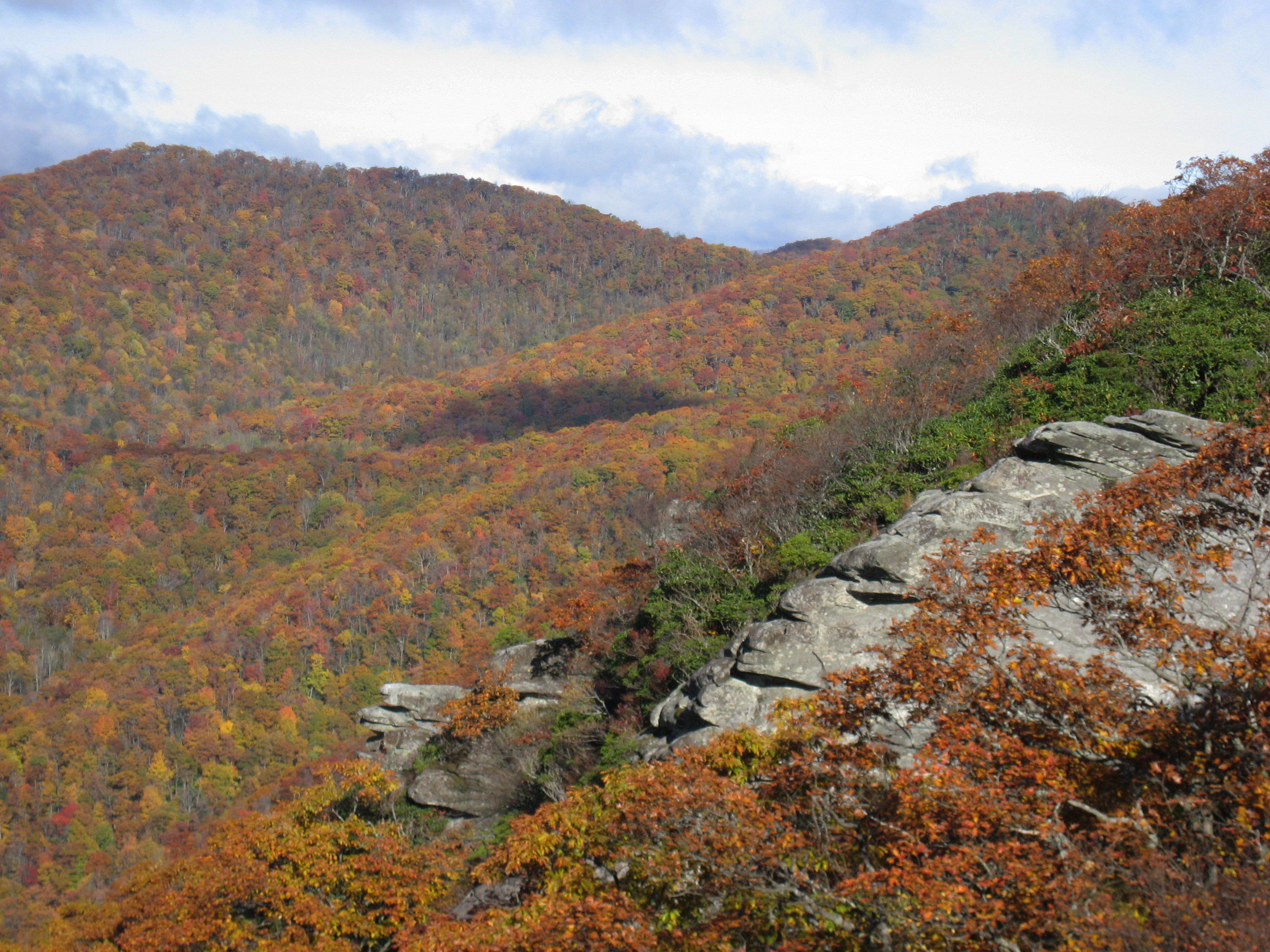
A late autumn view of Pickens Nose, above the Coweeta Hydrologic Laboratory.
Credit: Greg Zaussen (2013), CWT LTER
The impacts of drought can be devastating and long-lasting, from the loss of valuable crops and trees to increased wildfire risk. Droughts are difficult to predict since they are caused by the interaction of precipitation, temperature, and topography. A team of researchers from Coweeta LTER, led by Dr. Bijan Seyednasrollah, has developed a drought monitoring method that relies on remotely sensed data, operates in near real-time, and correlates very well with traditional methods.
Current drought assessment methods are too slow or too labor-intensive to be useful for large scale planning — a challenge complicated by the fact that the probability of drought also changes frequently. For example, only 2.3% of the contiguous U.S. is currently experiencing drought compared to 39.6% a little over a year ago. With climate change, droughts are predicted to become more severe and more frequent. Accurate, real-time predictions could help farmers and land managers plan ahead and respond. This is where the research from Coweeta LTER comes in.
The new technique relies on a measure of surface-atmosphere temperature difference, called “thermal stress,” to identify areas with unusual levels of evapotranspiration, which serves as a proxy for drought conditions. Smaller differences in surface-atmosphere temperatures mean less thermal stress, more evapotranspiration, and cooler surface temperatures. Higher temperature differences between the surface and atmosphere mean greater thermal stress, less evapotranspiration, and rising surface temperatures as the demand for moisture in the atmosphere exceeds the supply to leaves.
Dr. Seyednasrollah developed a live online interface called Drought Eye to represent thermal stress data for the contiguous US on a monthly basis and in near real-time using publicly available data from MODIS Land Surface Temperature and PRISM. Drought Eye shows how thermal stress data can be rapidly calculated across huge areas, allowing for powerful, continuous drought monitoring.

An example output from the Drought Eye application for thermal stress anomaly in April 2019 in the United States. Black lines represent physiographic regions.
Credit: Dr. Bijan Seyednasrollah, from http://phenocam.nau.edu/droughteye/
“While the evaporative cooling effect has been known for a long time, in this study we showed that a simple index such as thermal stress anomaly can more accurately predict the onset of drought than many state-of-the-art drought indices can,” says Dr. Seyednasrollah.
After working through the energy balance theory behind thermal stress, Dr. Seyednasrollah and his research team conducted studies in North Carolina, Oregon, and Tennessee to verify the accuracy of using thermal stress to predict drought conditions and to compare thermal stress to other existing drought indices. The team found that thermal stress is not only accurate, but also the most sensitive metric for quantifying evapotranspiration under dry and warm conditions when drought is most critical.
This new method for monitoring drought eases the limitations of cost and data associated with drought monitoring. It can be applied at regional to global scales and incorporated into land management plans where drought monitoring was previously infeasible. Drought Eye has already attracted thousands of visitors globally since its launch.
—Caitlin Swalec
References:
The National Drought Mitigation Center. United States Drought Monitor. University of Nebraska-Lincoln.
Schwantes, A.M., J.J. Swenson, M. Gonzalez-Roglich, D.M. Johnson, J.C. Domec, R.B. Jackson. 2017. Measuring canopy loss and climatic thresholds from an extreme drought along a fivefold precipitation gradient across Texas. Global Change Biology 23-12: pp 5120-5135.
Source:
Seyednasrollah, B., J.C. Domec, J.S. Clark. 2019. Spatiotemporal sensitivity of thermal stress for monitoring canopy hydrological stress in near real-time. Agricultural and Forest Meteorology 269-270: pp 220-230.










